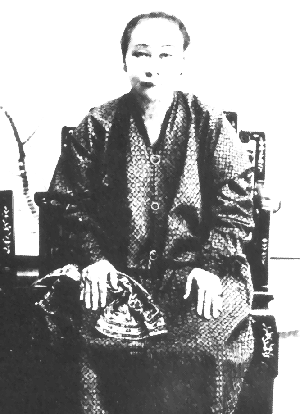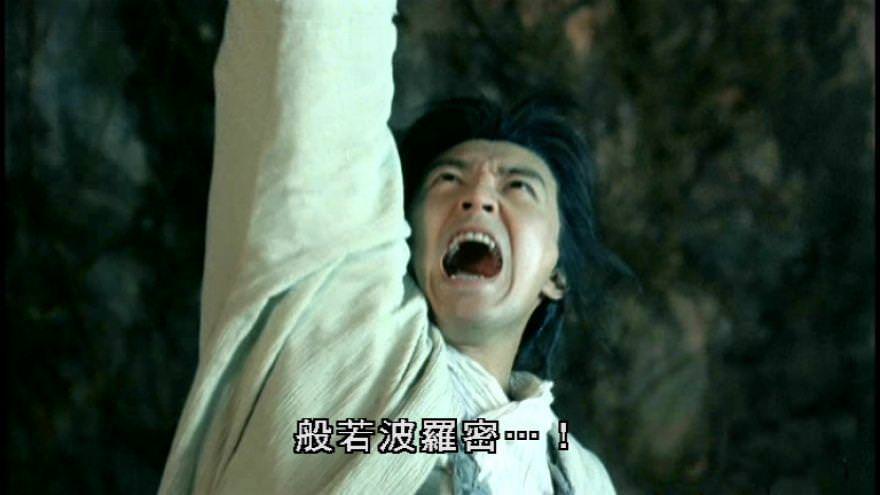The children of Yap Ah Loy sued their mum in court (1898 - 1904)
1957/0118652W
In the Court of the Senior Magistrate at Kuala Lumpur
Civil Suit No. 138 of 1898. In the matter of the Estate of Yap Ah Loy, deceased, between
- Yap Hon Chin (28)
- Yap Loong Shin (23)
- Yap Leong Soon (18)
- Yap Kim Neo
- Yap Leong Sem
by his next friend Ong Chi Siew - Yap Leong Fong
Plaintiffs
and
Kok Kang Keow (48), otherwise called Kok Ngeo Nga who is sued as Administratrix of the Estate and Effects of Yap Ah Loy, deceased.
Upon reading the report of the Secretary of Chinese Affairs, Federated Malay States, on certain questions referred to him on a summons taken out by Mr. W. Nicholas the Receiver appointed in the above section and upon hearing the above named Yap Hon Chin, Yap Loong Shin, Yap Leong Soon and Yap Leong Fong and Mr. V. F. Page, Counsel for the said Receiver, this Court finds that the persons entitled to share in the distribution of the assets of the Estate of Yap Ah Loy, deceased are
- Yap Hon Chin
- Yap Loong Shin
- Yap Leong Soon
- Kok Kang Keow
- Lam Sing So
- Wong Kam So
- Yap Kim Mong (Yap Kim Neo)
- Yap Kim Lan
makes the following orders in respect of the distribution of assets of the said Estate:
That the whole of the Estate both real and personal, be transferred to (1) Yap Hon Chin (2) Yap Loong Shin in joint equal shares after the claims of the inferior beneficiaries and others have been satisfied.
That the receiver pay A. M. N. Kathirasen Chetty, the Administrator of the Estate of Yap Loong Sem, minor deceased, the liabilities of the deceased, Yap Loong Sem, amounting to $1768.
That (4) Kok Kang Keow be allowed to remain undisturbed in the family house, which will be kept up by the residuary beneficiaries, (1) Yap Hon Chin and (2) Yap Loong Shin. That house property bringing in a monthly rental of $100 dollars, one hundred be set aside for (4) Kok Kang Keow as a personal allowance with liberty to will the principal away.

That house property bringing in a monthly rental of ($40) dollars forty, be set aside for each of the beneficiaries. (5) Lam Sing So and (6) Wong Kam So, as personal allowance with liberty to will the principal away to (1) Yap Hon Chin (2) Yap Loong Shin or (3) Yap Leong Soon; and that on their re-marriage the property revert to (1) Yap Hon Chin and (2) Yap Loong Shin in equal shares. That the Receiver submit for the approval of the Court the names of two trustees to whom sufficient property to produce a monthly rental of $100, $40 and $40 will be transferred to be held as a trust for the said 3 beneficiaries (4) Kok Kang Keow (5) Lam Sing So and (6) Wong Kam So.
That the sum of ($15,000) dollars fifteen thousand and ($7,500) dollars seven thousand five hundred, be set aside for (7) Yap Kim Mong and (8) Yap Kim Lan respectively, that the Receiver submit for the approval of the Court an arrangement for investing the said sums of money amounting to $22,500 on the security of landed property and that the profits and interest accuring from such investments be paid to (7) Yap Kim Mong and (8) Yap Kim Lan respectively.
That (7) Yap Kim Mong and (8) Yap Kim Lan have liberty to will away the said sums of $15,000 and $7,500 respectively and that in case of marriage be entitled to appropriate the said sums ofmoney respectively.
And that before transferring the balance of the Estate to (1) Yap Hon Chin and (2) Yap Loong Shin the Receiver satisfy himself that (2) Yap Loong Shin has fulfilled the terms of the contract by which he has purchased the share to which (3) Yap Leong Soon is entitled.
Dated this 25th. day of July, 1904
Sgd/ A. B. Voules,
Senior Magistrate,
Selangor
- The widow of Yap Ah Loy 葉德来 (b. 14 March 1837, d. 15 April 1885), Kok Kang Keow 郭庚嬌 (b. The birthdate of Kok was converted from a Chinese date recorded in Yap Ah Loy's genealogical record (庚戊年九月初四). See Ser Wue Hiong 徐威雄, Teoh Chee Keong 张集强, Chiam Yan Tuan 詹缘端, Tang Ah Chai 陈亚才 (2012) Moving Mountains: a pictorial history of the Chinese in Selangor and Kuala Lumpur 移山圖鑑: 雪隆華族歷史圖片集 Vol. 1, Centre For Malaysian Chinese Studies 華社研究中心, p. 34 (Photo 1.28).8 October 1850, d. 12 July 1924), was sued by her children and stepchildren in 1898. The first four plantiffs: (1) Hon Chin 韓進 (2) Loong Shin 隆盛 (3) Leong Soon 隆順 (4) Kim Neo 金娘 were mothered by Kok.
The fifth plantiff, Leong Sem 隆森 was the adopted son of the second concubine of Yap Ah Loy (Ho 何氏), and he was curiously represented by his friend Ong Chee Siew 王聚秀 (d. 1918). Ong was the brother-in-law of Yap Ah Shak.
The sixth plantiff, Leong Fong 隆芳 was actually Yap Ah Loy's nephew and the son of Maosong 茂松. It is likely that Maosong died young and Yap Ah Loy adopted his brother's son.
- The Court ruled that the primary beneficiaries are Hon Chin and Loong Shin. And they were each assigned 50% of Yap Ah Loy's asset. Hon Chin was 34.6 year-old when court decision was finalized on 25 July 1904. He was 5.3 years older than Loong Shin, and 10.2 years older than Leong Soon, his youngest brother. Outside the court, Loong Shin acquired Leong Soon's share but the amount was not disclosed. Curiously, Leong Soon died 3.4 years after the court case was concluded.
- Leong Sem, the adopted son of Wang was already dead in 1904 but his debt amounting to $1,768 must be settled by the primary beneficiaries. The Court also decided that Leong Fong 隆芳 was not entitled to any of Yap Ah Loy's asset.
- The Court added to the list of inferior beneficiaries, the names of the third concubine and the fourth concubine of Yap Ah Loy, namely Lam Sing So (林氏) and Wong Kam So (王氏). The Court ruled that Kok, Lam, and Wong are to be given a monthly allowance of $100, $40, $40, respectively, generated using the monthly rental of Yap's properties. Additionally, Kok can stay undisturbed in the family house. This family house was likely the ‘little bungalow on the nine acres' mentioned by J. H. M. Robson (1957/0235368W) on 23 March 1925. In the burial certificate (24 May 1942) of Auyong Kwee Hin 歐陽桂馨 (Yap Hon Chin's first wife), the address was rendered as 吉隆埠 + 巴生路 + 菜園屋.
- The Court added also the name of Yap Kim Lan 金蘭, the daughter of Wang, the fourth concubine of Yap Ah Loy. Both Kim Lan and Kim Neo were given a lump sum cut of $15,000 and $7,500. These monies are to be pooled in an investment fund, with profits and interest payable to Kim Neo and Kim Lan.
- Foo Yen Chew (2013) 古燕秋 misread the order of the children on the tombstone and incorrectly claimed that they do not match the genealogical records. She read the names from right to left and produced the following sequence: 1顺2發3興4盛5芳6松.
Interestingly, Foo blamed the government for her own inability to parse the tombstone sequence correctly: 如果政府從開始就能夠忠實地記載歷史,也許今天就不會有“誰才是葉亞來的長子”的疑問 (If the government had faithfully recorded history from the beginning, perhaps today there would be no question about the identity of the eldest son of Yap Ah Loy).
Actually, the names are supposed to be read in three blocks, with two names in each block. The names of the most senior children are written from right to left in the middle block, that is: 1興2盛. The next most senior children are written in box on the right: 3顺4發. The names of remaining children are put in the last block on the left: 5芳6松.
Foo's misinterpretation of the names on the tombstone and subsequent blaming of the government reveals a classic example of the ‘victim mindset'. This mindset can arise when a person, rather than acknowledging their own errors or lack of understanding, shifts the responsibility for those errors onto external factors or institutions. In Foo’s case, rather than reflecting on her mistaken reading of the names, she chose to blame the government for not having preserved historical records more faithfully 如果政府從開始就能夠忠實地記載歷史. Here are some possible reasons why she might have done this:
(a) Deflection of accountability: Admitting a misreading of historical artifacts like a tombstone could be embarrassing, especially for someone presenting themselves as knowledgeable in the field (in 2014, Foo published Important tombs, epigraphs, documents of Kwong Tong Cemetery Kuala Lumpur 死生契闊——吉隆坡廣東義山墓碑與圖文輯要). By blaming the government, Foo diverts attention from her own mistake and implies that the confusion around the genealogy is due to systemic shortcomings, not her personal error.
(b) Preservation of authority: Scholars and researchers often feel pressure to maintain credibility (She was an RA 副研究員 in Centre For Malaysian Chinese Studies 馬來西亞吉隆坡華社研究中心 from October 2011 to December 2013). By placing responsibility on the government, Foo may be attempting to shield her reputation, implying that anyone would struggle with the correct interpretation due to inadequate historical records, rather than any oversight or incompetency on her part.
(c) Distrust or frustration with institutions: Foo’s remark suggests underlying frustration with the government’s role in historical record-keeping. She may believe, accurately or not, that any ambiguities or gaps in historical narratives are the fault of institutional negligence. This broader view of government as responsible for such historical “mistakes” might fuel her reaction.
(d) Confirmation bias: Foo might have been searching for confirmation of her own preconceived ideas (reading the Chinese names from right to left and the incorrect assumption that ordinality flows in the same direction) or interpretations about the genealogy. When confronted with an alternative reading that contradicted her own, she could have seen it as a failure of the historical record rather than questioning her initial assumptions.
Foo’s blame-shifting onto the government reflects a reluctance to accept fault and a preference for seeing the issue as part of a larger systemic problem. This allowed her to maintain her stance without addressing her own analytical oversights.





Comments